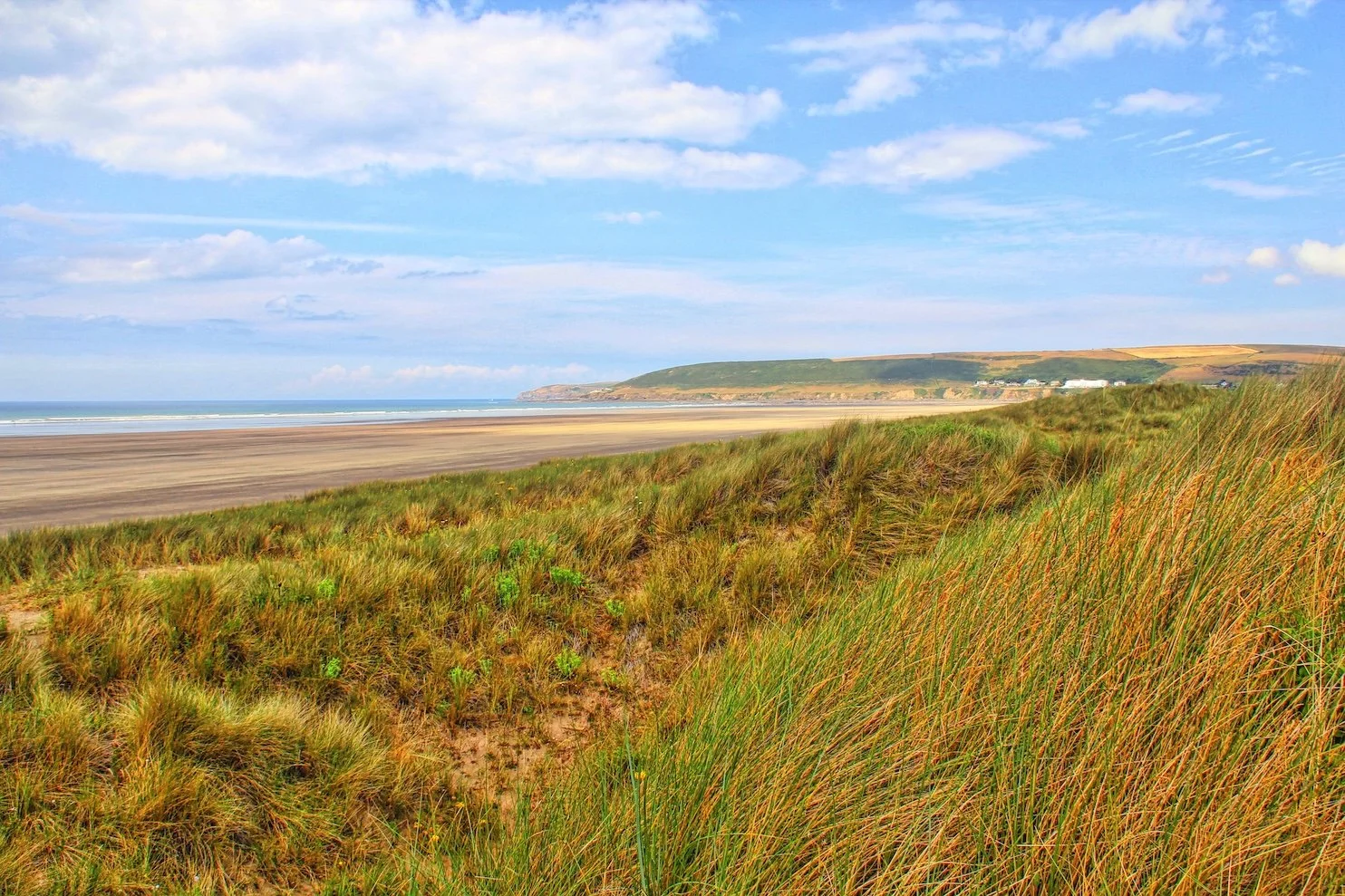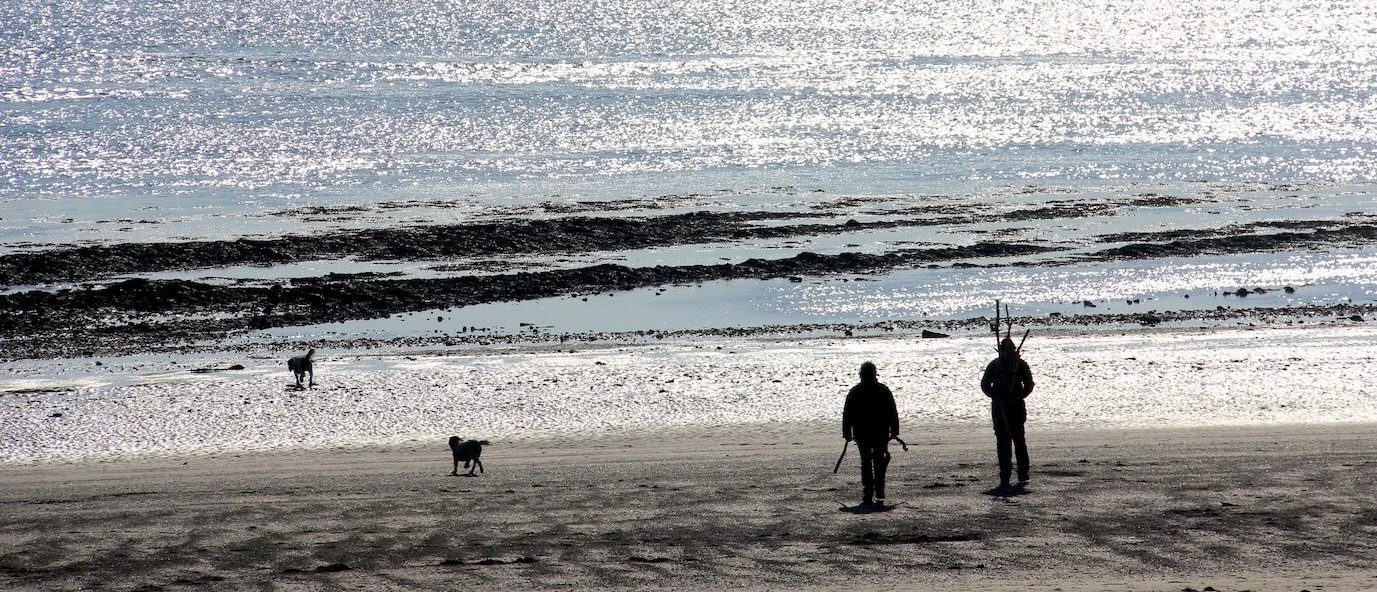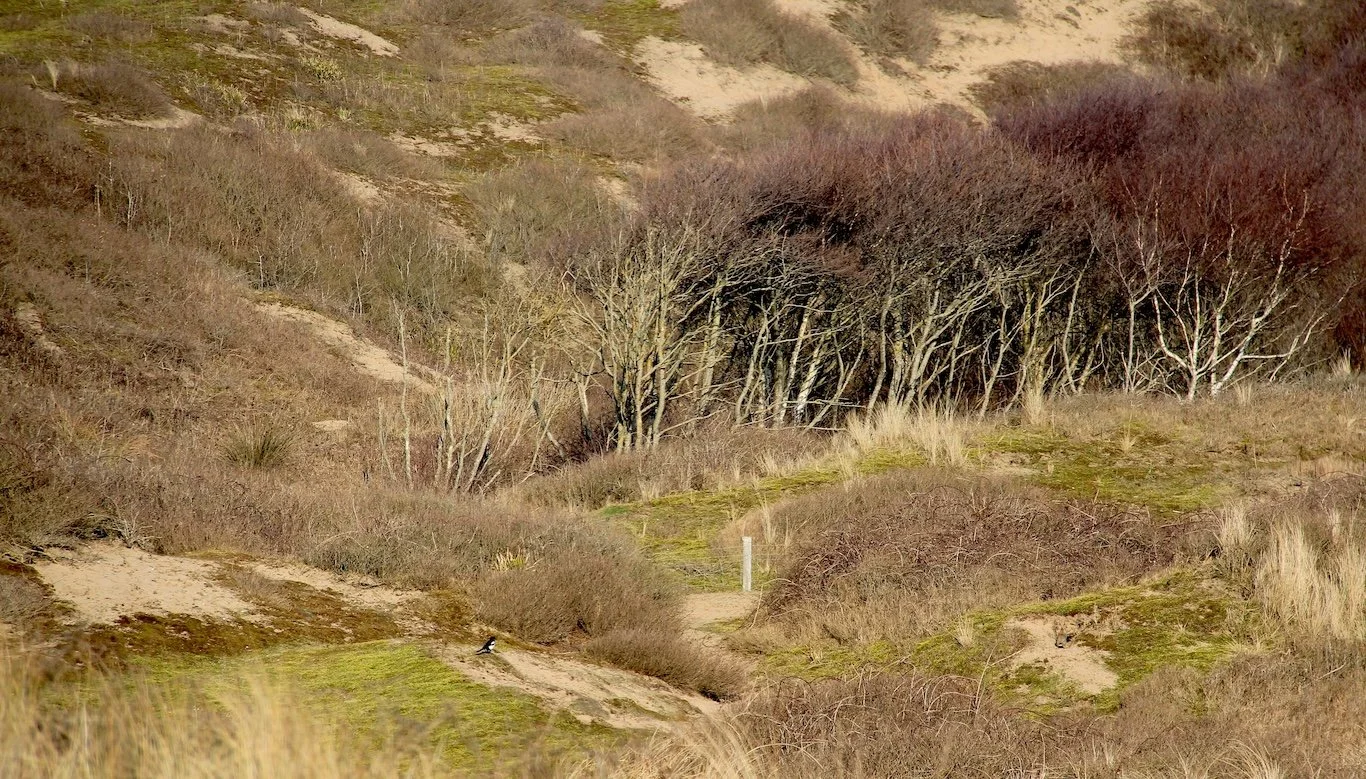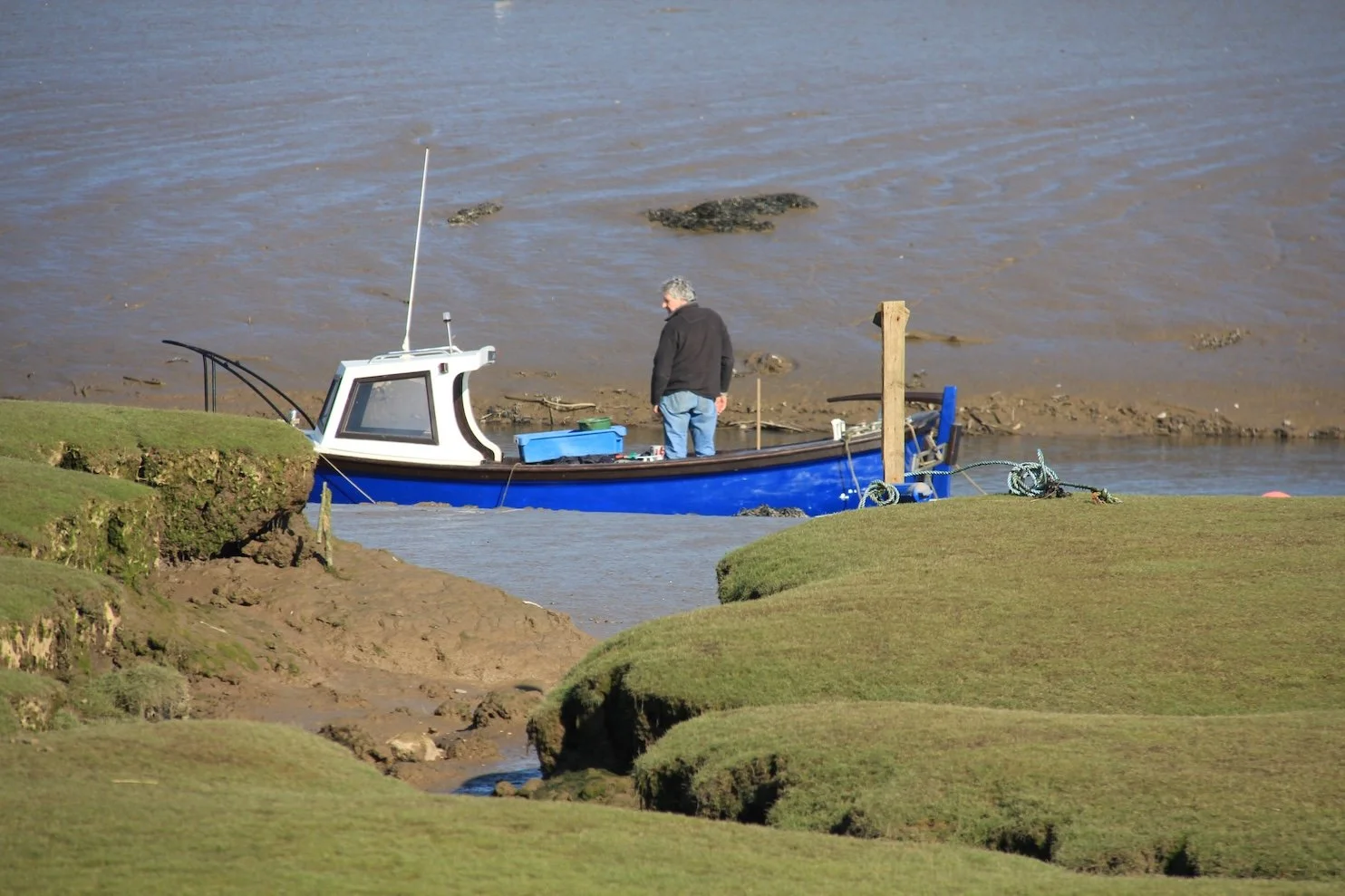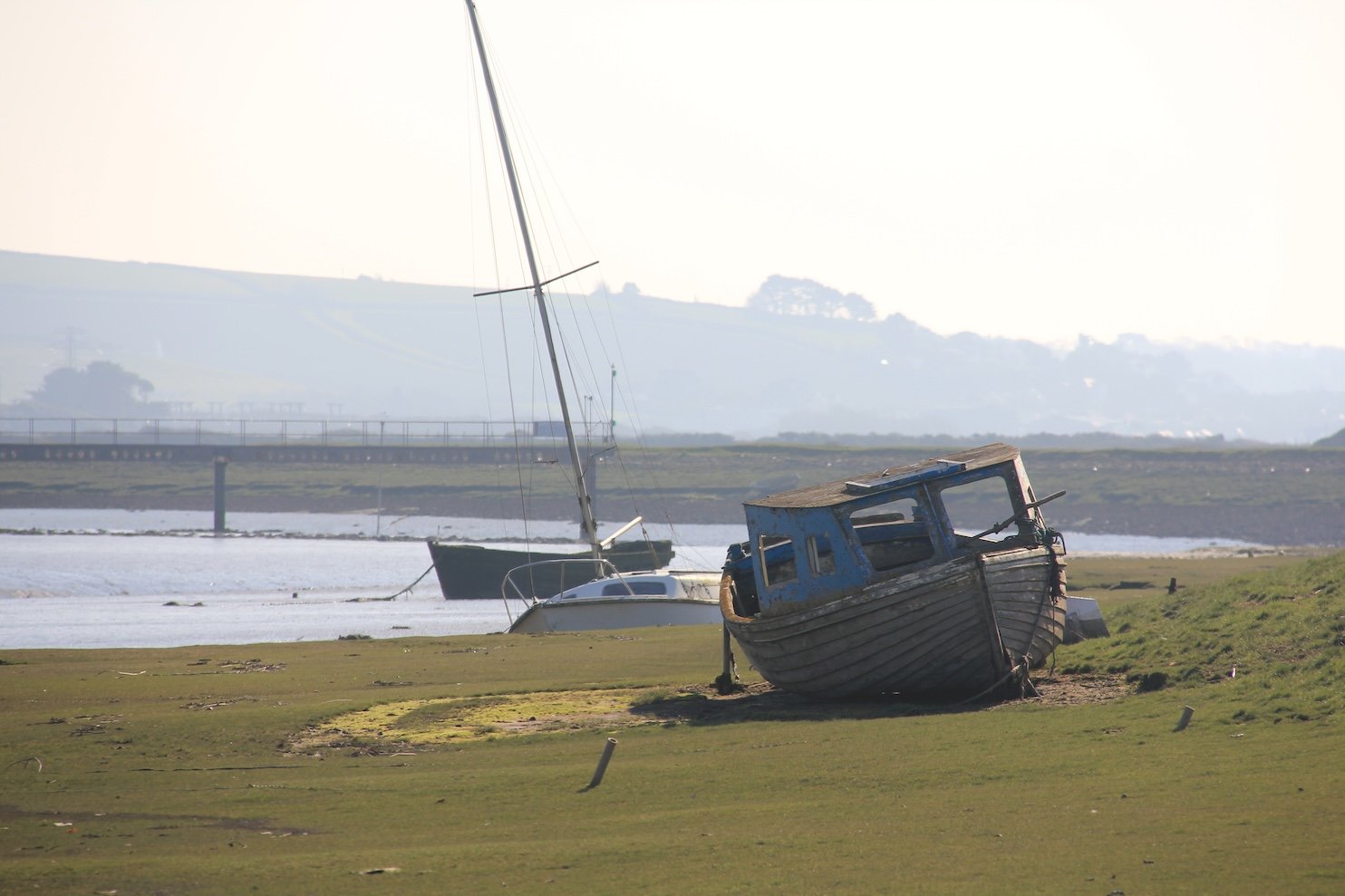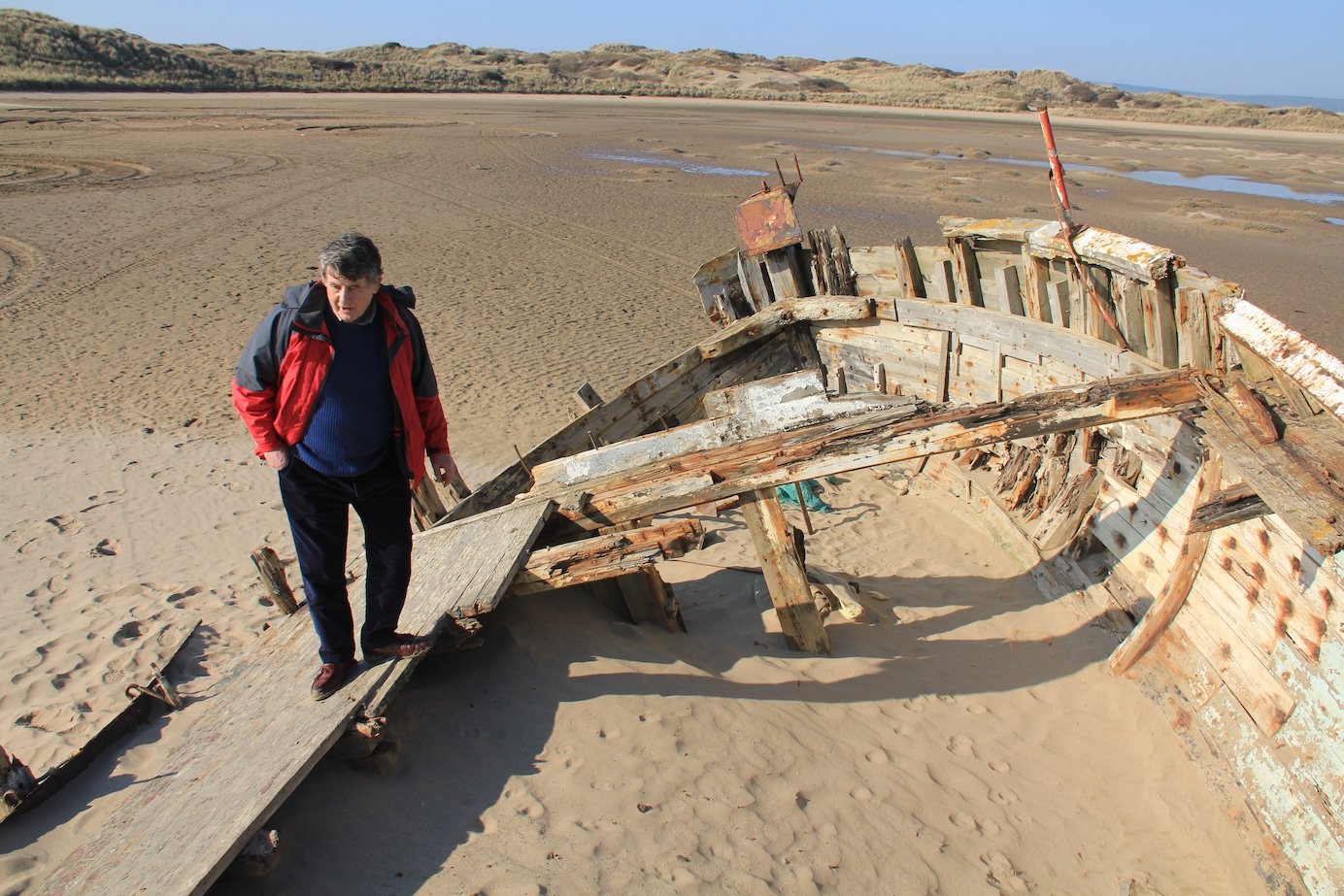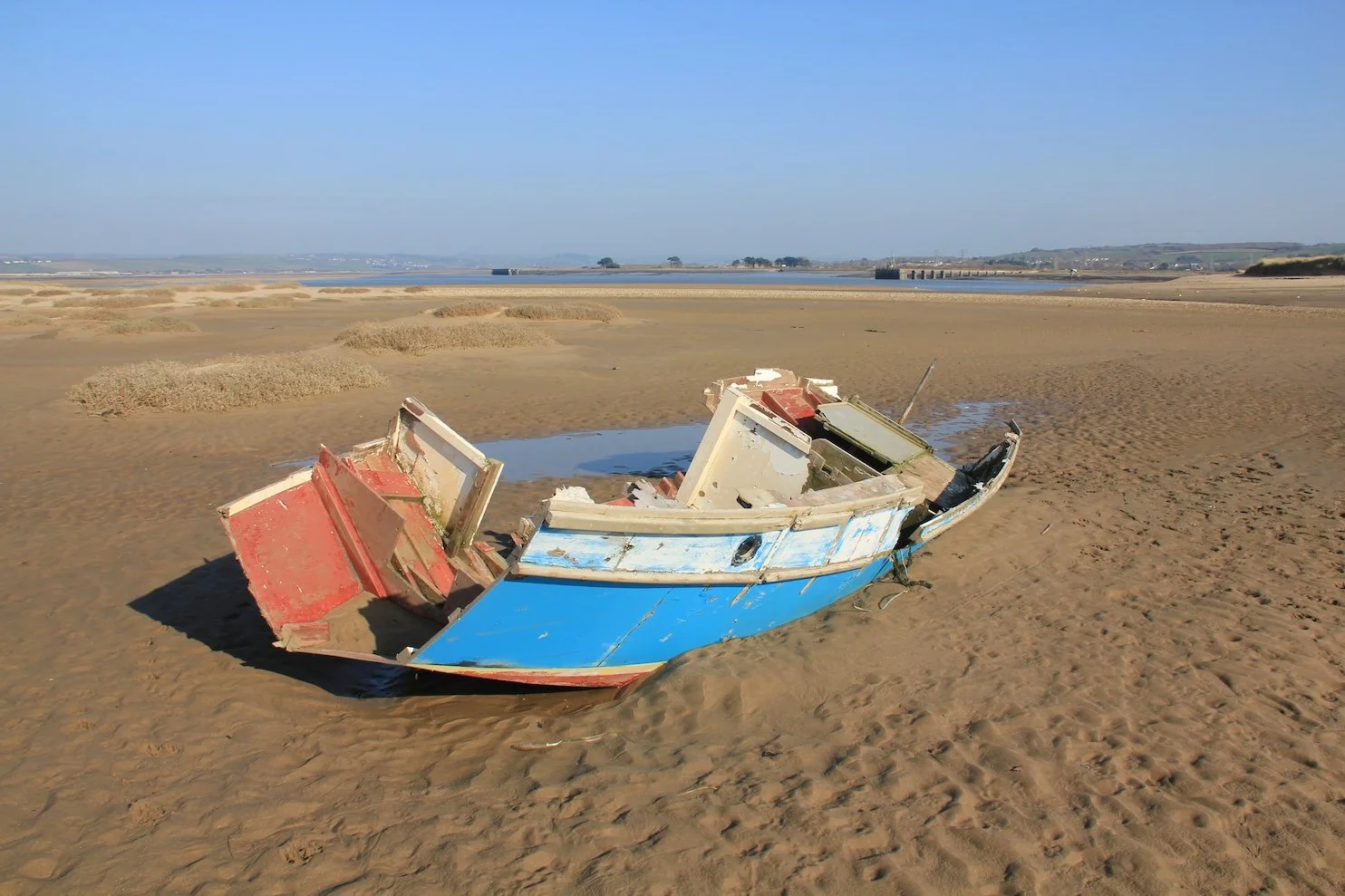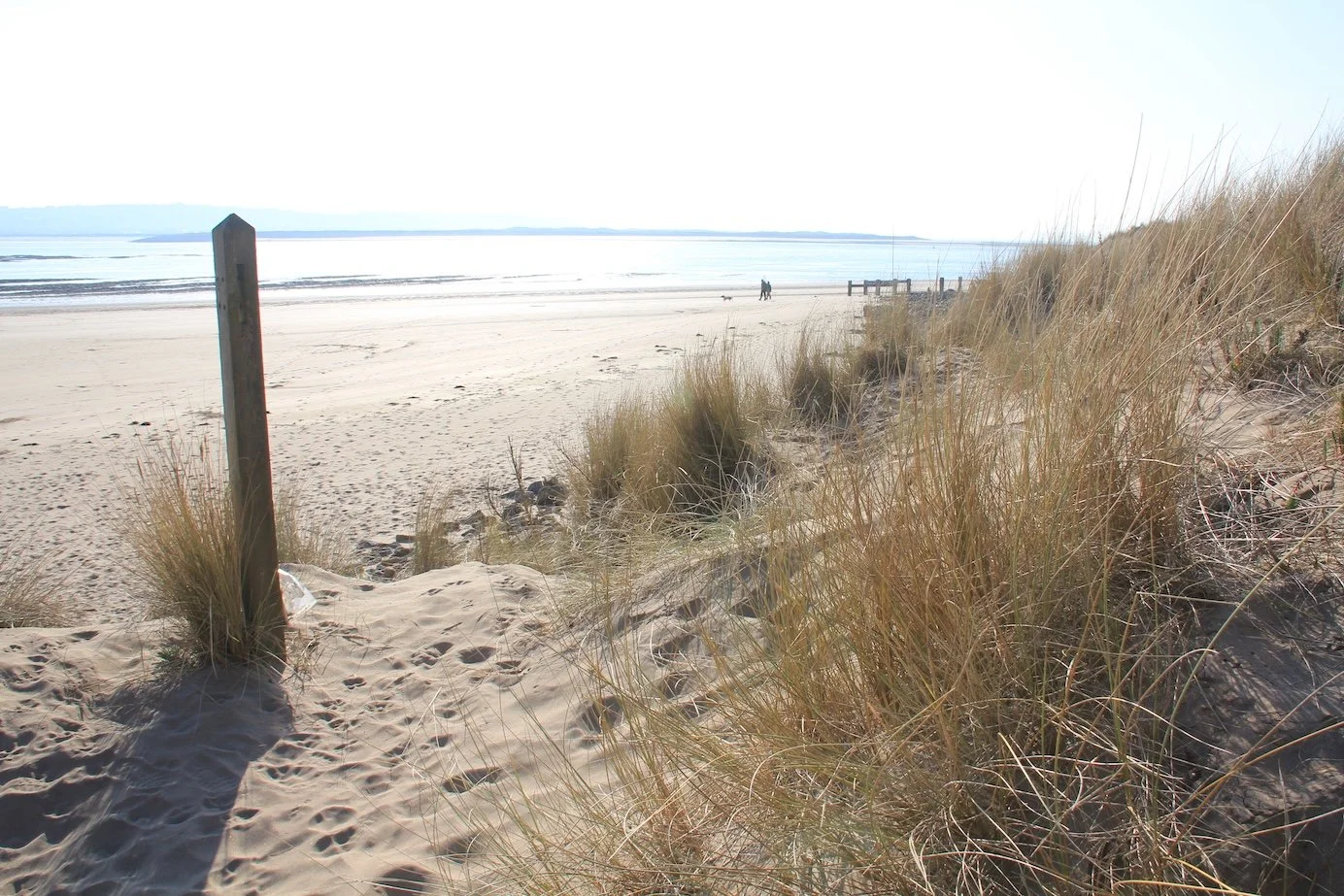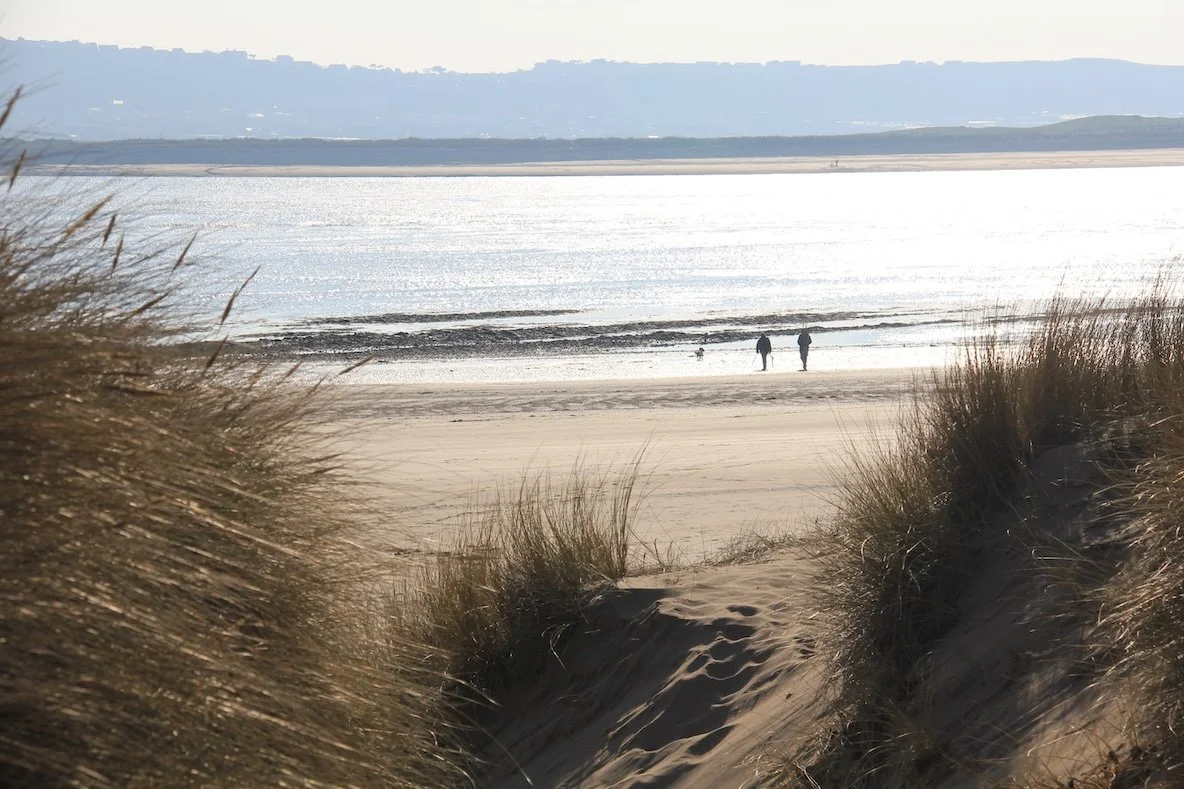Devon's Seacret Seasides - Crow Point
What Is a Psammosere and Why Braunton Burrows Matters
Do you know what a psammosere is? No, neither did I. What I now know is that the word psammosere is used to describe a sand dune system – and that Braunton Burrows the largest psammosere in England.
If you haven’t ever been there, please go. Braunton Burrows is truly magnificent – and it boasts its own Secret Seaside.
Saunton Sands: The Famous Face of North Devon’s Dunes
Of course, everyone knows Saunton Sands which run so broadly and majestically down the north-south seaward side of the massive dune system. It’s one of the biggest, most outstanding, sandy beaches in South West England. I even have a photographer pal who took pictures of a Hercules transport aircraft landing on Saunton Sands - so no such beach could ever be described as secret.
Introducing Crow Beach: North Devon’s Hidden Curve of Glory
However, Crow Beach could. It’s just around the corner, tucked behind the point that gives it a name – and you will rarely see many people clogging up its mystical sandy acres.
At least, not in comparison with the busy upper end of Saunton Sands, or neighbouring Croyde - or any of the other big North Devon beaches, come to that.
Crow Beach walkers in the evening light
Crow Beach - or Broad Sands, to give it another name – is by no means the loneliest or least visited seaside in this series, but it is far from well known – as I was able to prove when I quizzed my learned brother on the subject.
Hidden Waterscapes: Velator Creek, Horsey Island and the River Caen
“Do you know Velator Creek?” I asked him. “Or how about Horsey Island or the River Caen?”
Velator Quay
My maritime loving brother John knows more about the West Country littoral than anyone else I can think of, and yet he drew a blank on my little Taw-side listing.
For that is where you’ll find all these places: at the mouth of the River Taw, on its northern shore just before it rounds Crow Point to join its sister, the River Torridge, at the place where the two say goodbye to land and make for the ocean.
It’s their collective activity down the centuries – their dual fight with the sea – which has caused the massive psammosere known as Braunton Burrows.
Wreck at Crow Point
Ecology and Rarity: Braunton Burrows in Detail
Here’s what the official blurb has to say about the place: “It is particularly important ecologically because it includes the complete successional range of dune plant communities, with over 400 vascular plant species. The short turf communities are very rich in lichens and herbs, and the dune slacks are also rich. The many rare plants and animals include 14 with UK biodiversity action plans. For example, this is one of only two sites in the UK for the amber sandbowl snail Catinella arenaria.”
The official website also states: “The site is currently leased by the Ministry of Defence from the Christie Devon Estates Trust. It is also used, particularly by local people, for a range of leisure activities, particularly dog-walking, from three large car parks adjacent to the site. There is a long tradition of scientific research, particularly botanical.”
Scrub trees at Braunton Burrows
Fish and Chips and Forgotten Quays: My Route to the Secret
So, how did I find myself down on Crow Beach at the very southern edge of the dune system the other day after that long meeting? The reason was that - deprived of light and half starving - I repaired to Squires fish and chip emporium in Braunton, which I believe to be the best in the region.
Having bought my cod and mushy peas I was looking for somewhere al-fresco in which to enjoy them when I stumbled upon Velator Quay – a shrine of hulks and hulls.
The quay is located just to the south of Braunton at a point where the River Caen turns tidal. For those of you who haven’t heard of this North Devon waterway, it rises in the hills which separate Barnstaple and Ilfracombe and runs just a few short miles to the south.
The Industrial Past of Velator Quay
The quay has that wonderful forgotten air I love – but forgotten airs only come about because such places were once at the hub of things. Research Velator Quay and you will learn all manner of details about grand canal schemes and the like, which came about when the whole surrounding area of erstwhile saltings and marshes was being reclaimed.
Tidal waterways behind Braunton Burrows
The quay at Velator was opened in 1870 and - amazingly given the slightly neglected scene today – visited by ships of up to 130 tons in size. These large boats continued to call in regularly right up to the 1960s.
Walking the Dyke: Towards Crow Point
The reclaimed meadowlands hereabouts are guarded by massive dykes, and it was this extensive system of raised embankments which provided me with a post cod-and-mushy-peas stroll.
From the quay you can follow the South West Coast Path downstream – it adheres to the top of the embankment and passes the Toll House which is on the little private road that leads down to Crow Point.
River Caen, Devon
This was my destination, but to get there it’s best to take the right hand path at the Y-shaped junction just south of the toll point so that you can walk around the coast of Horsey Island. This is a great wedged-shaped area of salt meadow land that guards the western side of the Caen’s estuary – or, rather, the place where it flows into the main Taw Estuary.
After Pill’s Mouth the path veers south west and heads direct for the point where you will be able to see the great dunes of the Burrows descend to their southernmost point.
Velator Quay
Crow Beach and the Mystery of the Wreck
Crow Beach is the sickle-shaped bay that stretches between you and the end of the dunes – and a very handsome little curve of glory it is too…
Where Velator Creek meets the main estuary
I’ve been there twice in the past two years and not seen another soul, save for one or two dog-walkers way back in the dunes. Admittedly, when I went this week the school holidays had just broken up – I have the distinct feeling this soft-sand beach can get pretty full at times.
One of the things I particularly like about Crow Beach is that it plays host to one of the loveliest wooden hulks I’ve seen anywhere. The big red wooden hull lies careened in the sand and you can’t help but wonder what wondrous vessel this once was.
Why We Should Celebrate Rust, Wrecks and River Mouths
Old boats – some lived in, some rotting – marine projects in the making, the hopeless results of grown men’s boyish dreams, the tangible testimonies of mankind’s love for the sea, timber hints of past summers, plastic optimism for races that will never be sailed, modest dinghies lying derelict and, best of all, massive hulks that once ruled the ocean wave.
Why do I like ruined boats cluttering beaches and hidden creeks that nine out of 10 councillors would like to see “tidied up”? Because, in my opinion, they hold more character and charm in one muddy oozing acre than many of our finest bits of countryside do in whole square miles.
Creeks, estuarine nooks and crannies, forgotten river mouths, secret seasides – call them what you will – all are salty romantic jewels in the crown of the Westcountry peninsula.
And if I am in a minority when it comes to loving them, then so be it.
To hell with the tidy-uppers, may the lovers of the clinically empty “nice and pretty” type landscapes sink to the gunnels, down with the detesters of rusting corrugated iron. Wrecks rule, OK?
To which all my friends say in chorus: “You would say that – you are the living embodiment of the Wreck of the Hesperus.”
One Last Glimpse Around the Headland
But never mind. Let’s stick our heads around the sandy tip of Crow Point. We might as well now we’re here – and it’s quite a surprise because the scene changes completely. We were now on the banks of the combined Taw and Torridge Estuaries at a place where you get fantastic views of Appledore.
I walked back through the dunes to sit on the old wreck – and did so with feelings of vague annoyance. You see, I wrote about the wooden hulled hulk before once and someone kindly sent me a letter explaining which vessel she was and why she’d ended up deep in the sands of this beautiful beach.
I have lost that letter. And maybe, just maybe, that is just as well. The romance of wrecks is all about their mystery. Where have they been? Who sailed in her and why? Sometimes when you learn – for example - that something was nothing but a coal-smack plying between Barnstaple and Swansea, the romance disappears.
Which is a bit like secret seasides – you don’t really want to know too much about them. You just need to know they exist and that sometime – some distant happy time – you might get to visit them. Perhaps in an hour of need, like when you’ve been locked in a meeting all one bright sunny morning.



